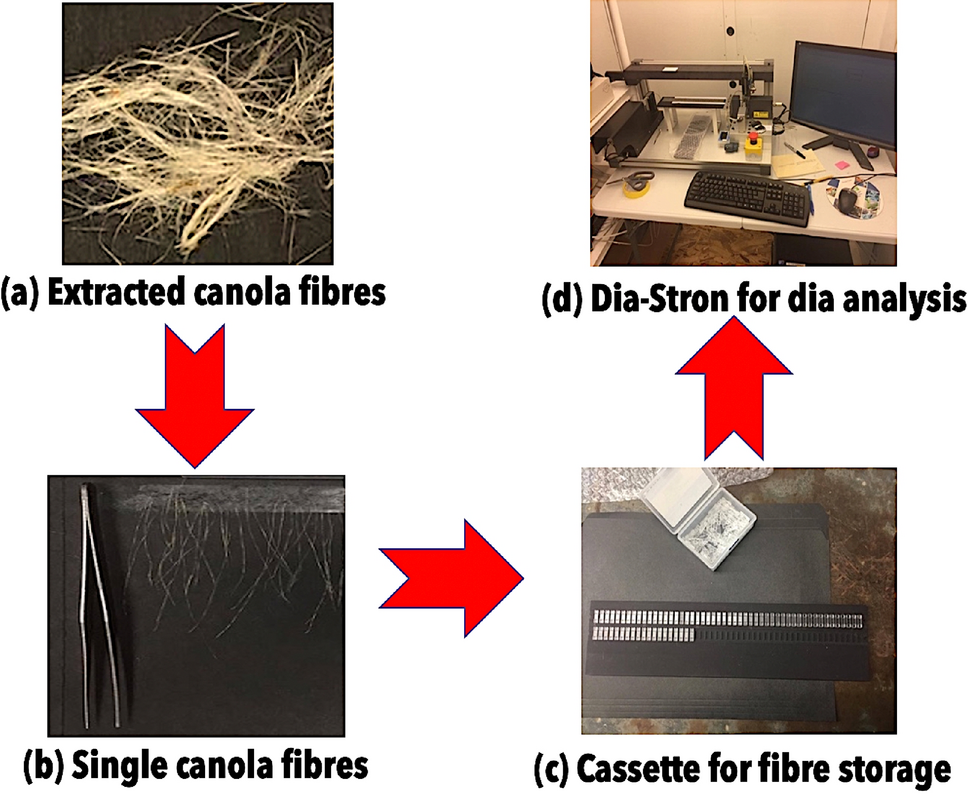Increasing Output Accuracy with an Optical Fibre Diameter Analyser
Increasing Output Accuracy with an Optical Fibre Diameter Analyser
Blog Article
Enhance Your Fibre Optic Projects With a Reliable Size Analyser
The combination of an effective size analyser into fibre optic tasks offers as an essential aspect in accomplishing accuracy and consistency. By helping with exact size measurements, these analysers not only improve the quality of setups but additionally minimize possible compatibility problems amongst components.
Importance of Size Dimension
Gauging the diameter of fibre optic cable televisions is a vital task that ensures optimum performance and dependability in communication systems. Exact diameter measurement is essential for different factors, primarily for keeping signal stability and lessening loss. A cable television's size directly affects its capability to transmit light properly; deviations from the defined diameter can bring about increased attenuation, which impacts the total performance of the network.
In addition, precise measurement is critical during the installation and maintenance of fibre optic systems. An incorrect fit between connectors and wires can result in signal destruction or full failure of communication links. By guaranteeing that diameters are within specified tolerances, technicians can improve compatibility in between components, leading to improved system reliability.
In enhancement, size measurement plays a significant role in quality assurance during production. Uniformity in the diameter of fiber optic cable televisions is vital for making sure uniform efficiency across various sets. optical fibre diameter analyser. This uniformity aids suppliers maintain industry requirements and fosters confidence among end-users
Features of an Effective Analyser
An efficient analyser for fiber optic jobs have to incorporate several essential features that improve accuracy and usability in diameter dimension. Firstly, high-resolution optical sensors are crucial for specific diameter analyses, making it possible for customers to identify even the tiniest variants in fibre density. These sensors must be matched by innovative calibration systems, ensuring consistent efficiency throughout various problems and products.
Secondly, a straightforward user interface is essential for helping with simplicity of operation. This includes intuitive software application that enables for smooth data input and outcome, together with visual representations of the measurements taken. A mobile style enhances use in various field settings, making it easier to conduct assessments on-site.
Furthermore, the analyser needs to support numerous measurement modes, suiting different fibre types and applications. The capability to store and retrieve historical information is one more important function, enabling individuals to track efficiency in time and make educated decisions.
Benefits for Fiber Optic Projects
Implementing a size analyser in fiber optic jobs uses considerable advantages that dramatically improve job performance and quality. Among the key benefits is the ability to make certain specific measurements of fiber size, which is crucial for maintaining optimal efficiency in fiber optic systems. Precise diameter readings help in the recognition of disparities that might cause indicate degradation or loss, thus ensuring high-quality transmission.
Additionally, using a diameter analyser simplifies the quality control process. By automating dimension tasks, job groups can decrease the time invested on manual assessments, bring about faster job completion and reduced work costs. This efficiency likewise permits more rigorous screening procedures, causing improved item integrity.
In addition, consistency in fibre size measurements promotes compatibility with other fiber optic elements, minimizing the risk of setup mistakes and improving overall system efficiency. The unification of a size analyser not only aids in maintaining industry requirements however also promotes confidence in task deliverables.
Integration Into Existing Workflows
Integrating a diameter analyser into existing operations can dramatically enhance the functional efficiency of fiber optic jobs. By perfectly including this innovation, groups can accomplish specific measurements that are vital to keeping the stability and performance of fiber optic systems. This combination enables real-time data collection and evaluation, which can be vital throughout the manufacturing and installation stages.
Furthermore, the ability to automate diameter dimension procedures lowers the possibility for human error, ensuring regular quality control throughout the task lifecycle. The data generated can be easily shared across platforms, facilitating collaboration amongst designers, service technicians, and task supervisors. This access enhances decision-making and increases job timelines.
Picking the Right Diameter Analyser
When selecting a size analyser for fiber optic tasks, it is important to consider numerous essential aspects that straight impact measurement accuracy and operational effectiveness. Initially, the resolution and accuracy of the analyser ought to line up with the particular needs of your job. Greater resolution instruments can find minute variants in diameter, which is essential for guaranteeing ideal efficiency in fiber optic systems.
For tasks with limited target dates, a diameter analyser that offers fast information acquisition can considerably improve performance. In addition, think about the analyser's compatibility with existing systems and software.
An additional important variable is the variety of sizes the analyser can fit. By very carefully evaluating these elements, you can select a diameter analyser that enhances the performance and precision of your fiber optic tasks.
Conclusion
To conclude, the combination of an effective size analyser is vital for boosting fiber optic tasks. Exact size measurements ensure optimal efficiency and dependability while decreasing installment mistakes. Advanced attributes facilitate real-time data original site collection and compliance with market standards, inevitably boosting the top quality of deliverables. By prioritizing the choice and application of a proper analyser, job effectiveness is dramatically improved, leading the way for effective outcomes in fiber optic applications.
A cable's diameter directly influences its capacity to send light effectively; discrepancies from the go to this web-site defined size can lead to increased depletion, which affects the overall performance of the network.

Report this page